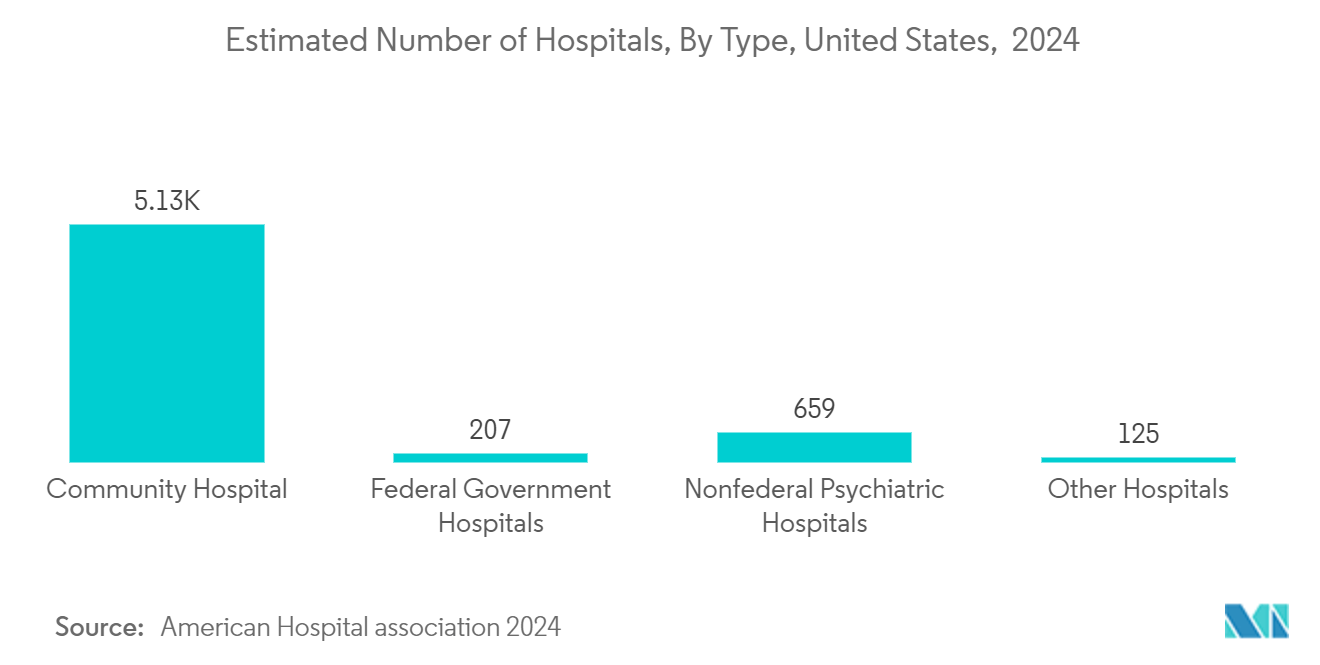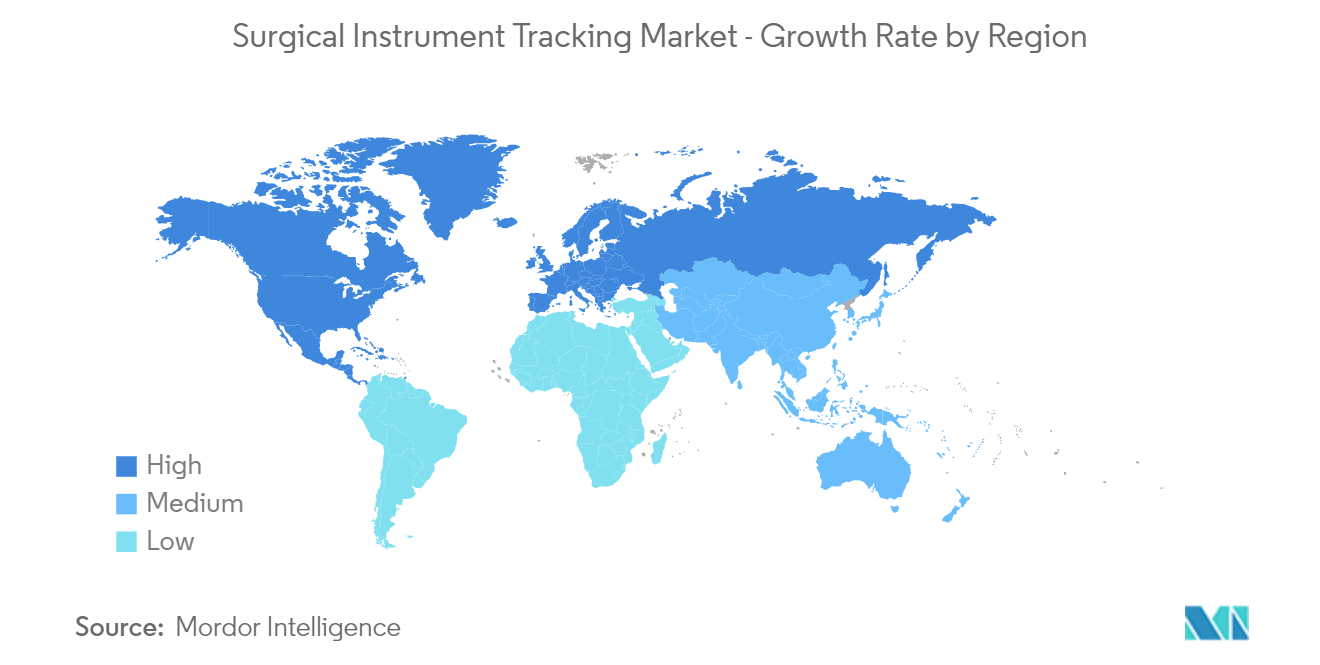Market Trends of Global Surgical Instrument Tracking Industry
The Hospital Segment Expected to Witness Growth over the Forecast Period
Hospitals are sites providing medical and surgical treatment for patients, and hence there is a higher need for surgical instrument tracking. The increasing healthcare expenditure, along with investment in new hospitals with the expansion of existing ones, are expected to boost growth in the studied segment over the forecast period.
The growing number of hospitals across the world is expected to increase demand for the hospital tracking instrument, thereby boosting segment growth. The American Hospital Association (AHA) statistics for 2024 show that the number of active hospitals in the United States increased from 6,200 in 2024 to 6,129 in 2023. Further, as per the same source, the total hospital admissions in the hospitals of the United States stood at about 33.4 million with a total hospital expense of about USD 1.2 trillion. Thus, the increase in the number of hospitals is expected to boost growth in the studied segment.
Research studies providing insight into the utilization of RFID in hospitals are another factor in market growth. According to a research report released in January 2022, surgical instrument excess is to blame for operating room costs, confusion, and workload. Many health systems have acknowledged the need for supply improvement because it is estimated that 78% to 87% of instruments go underutilized. Previous quality improvement projects have produced an average 52% reduction in supply by manually tracking instrument use and giving surgeons the responsibility of reviewing instrument trays. Previous approaches for identifying necessary instruments are qualitative, expensive, lack scalability and sustainability, and are subject to human error while illustrating the extent of instrument excess. A fresh data stream produced by RFID technology enables precise instrument supply optimization. Thus, such research studies are expected to increase the market growth.
Therefore, owing to the above-mentioned factors such as the increasing number of hospitals and spending hospital expenses and increasing the demand for surgical tracking instruments, thereby boosting the segment growth.

North America is Expected to Hold a Significant Market Share Over the Forecast Period
North America is expected to dominate the market owing to factors such as the rising burden of chronic diseases and the Canadian government investing heavily to improve the healthcare infrastructure.
The growing number of surgeries performed in healthcare facilities requiring the surgical instrument is expected to increase demand for the tracking instrument, thereby boosting the market growth over the forecast period. For instance, according to the data published by the Canadian Institute for Health Information, in December 2022, about 700 outpatient hip and knee replacements were performed during 2021-2022 in Canada. In addition, about 5.6% of hip and knee replacements done to treat osteoarthritis were performed as day surgeries, compared with 8.2% in the previous period. Hence, an increase in surgical procedures leads to a rise in the adoption of surgical instrument tracking systems, thereby driving market growth.
Furthermore, the data updated by Cedars-Sinai in January 2022 showed that coronary artery bypass graft surgery (CABG), also known as coronary artery bypass, or bypass surgery, was the most common heart surgery, and more than 300,000 people had successful bypass surgery in the United States each year. This elevates the need for surgical instruments and is likely to boost the market for surgical tracking instruments over the forecast period.
Thus, the increasing number of chronic diseases and a growing number of surgeries are expected to contribute in market growth over the forecast period.


